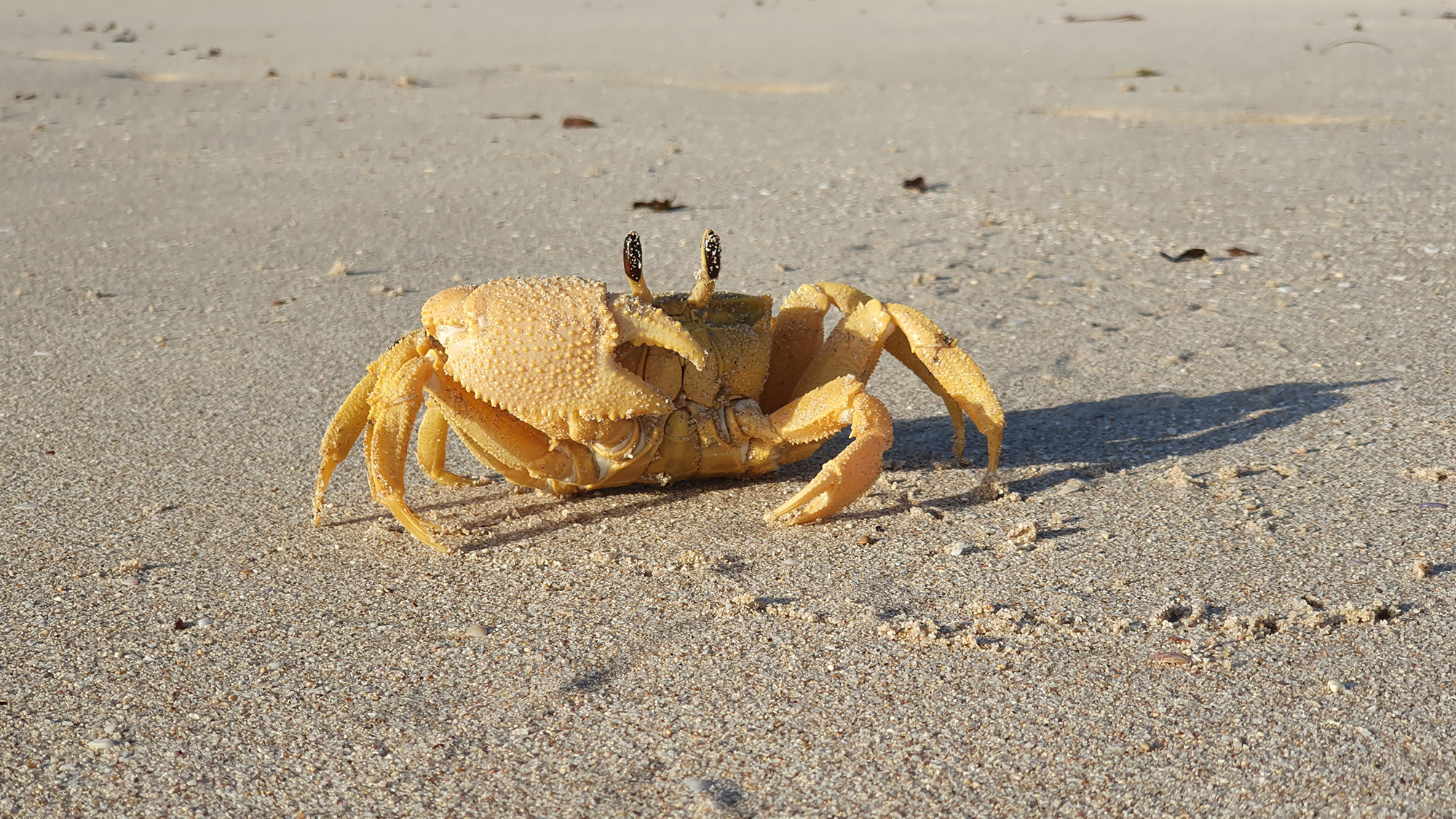Life can get off to a rough start for loggerhead sea turtle (Caretta caretta) hatchlings. In fact, it can look more like a feeding frenzy with the sea turtles as the featured dish. After they hatch from their nests on the beach, Australia’s golden ghost crabs (Ocypode convexa) will trap the turtles by gripping their necks. Then they decapitate the turtle and feed on their severed heads. It’s a grisly scene for the turtles that is detailed in a study published earlier this year in the journal Animals.
The crabs along Australia’s western coast prey on loggerhead sea turtles. CREDIT: Casper Avenant, ECU and DBCA.
“Previous studies are mostly limited to evidence of loggerhead turtle nest disturbances and egg counts,” said Casper Avenant, a study co-author and marine biologist from Edith Cowan University in Western Australia. “While even fewer studies have investigated the mechanics of hatchling predation once they have emerged from the nest.”
Found along the west coast of Australia, ghost crabs are smaller than a walkie talkie. During the day, they shelter in the high tide water mark where it is cool, emerging at night in search of food. As omnivores, they mostly eat leafy brown algae, but they are a deadly enemy for both hatchlings and sea turtle eggs during the nesting season (mid-November to late February).
“On beaches where ghost crab densities are high, multiple crabs can feed on hatchlings emerging from nests over several nights, often resulting in partial destruction of turtle clutches,” study co-author and Edith Cowan University coastal ecologist Glenn Hyndes added. “As an endangered species, a high level of predation of eggs and hatchlings could be an issue for the long-term survival of loggerhead turtle populations.”
Since hatchling predation usually occurs at night and in remote locations, it is difficult for scientists to capture this behavior without disturbing it. However, infrared videography can help record what’s going on on the beach without disturbing the turtles or crabs.
The team on this new study used the special cameras to watch the golden ghost crabs feed along the Ningaloo Coast at Bungelup Beach and Gnaraloo Bay on Australia’s central western coast. Earlier studies found that more than 35 percent of loggerhead eggs were preyed upon within nests at Ningaloo, including 80 percent at one single rookery. Of the hatchlings at Ningaloo, 45 percent were eaten.
When approaching a sea turtle egg, the ghost crab will snip a distinctive slit into eggshells. They’ll then use this hole to consume the egg’s contents, according to Avenant.
As for feeding on the hatchlings, ghost crabs use their large claw to restrain the small turtles, while the small claw cuts through the soft skin around the neck. This partially or fully severs the turtle’s head before the crab feeds from the cavity.
“In terms of predator behaviour, it was interesting to note that ghost crabs display similar approaches for breaching eggshells when subduing and feeding on hatchlings,” said Avenant. “We also found that ghost crabs appear to anticipate the emergence of loggerhead hatchlings, often congregating near nests in the moments prior to emergence.”
They also compared this behavior in the wild with those in an aquarium setting at the Minderoo Exmouth Research Laboratory. The aquarium-based feeding showed that the ghost crabs preferred to feed on animal flesh over brown algae.
According to the team, this research indicates that ghost crabs are effective predators of the early life phase of sea turtles with a taste for meat.
Source link
